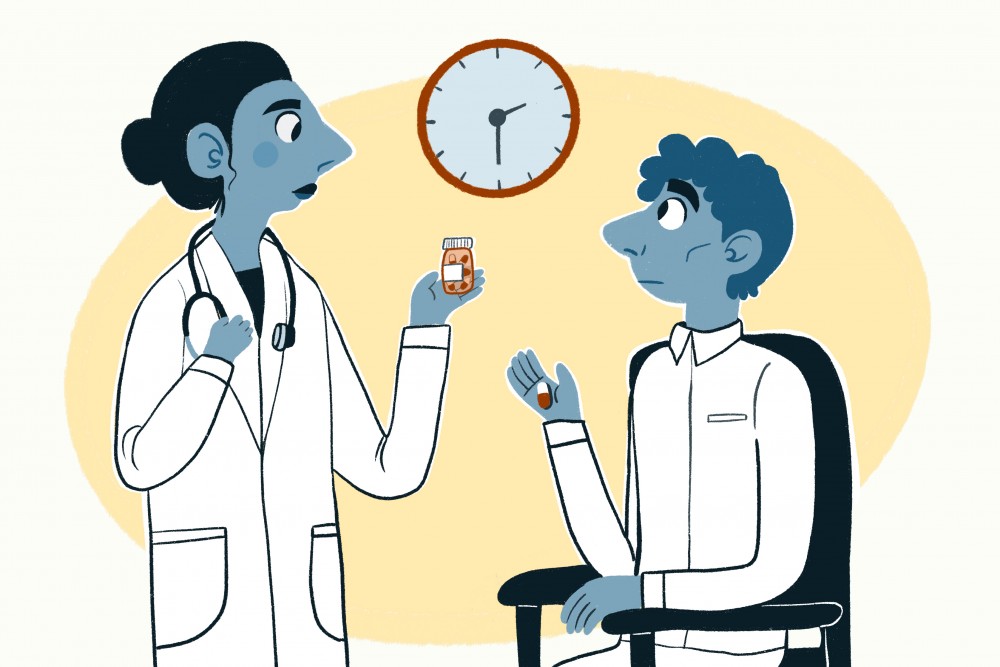Primary care physicians are more likely to prescribe opioids later in the day and when they’re running behind schedule, according to a study conducted by researchers at the University of Minnesota and Harvard University.
This is the first national study that has looked at opioid prescribing over the course of a day, researchers said.
“We did this study because there’s this widespread concern in the medical community that time pressure in medicine can change the way that physicians make decisions for their patients,” said Hannah Neprash, a lead author of the study and an assistant professor in the University’s School of Public Health.
Researchers studied a large electronic database of physician visits to examine how physicians’ prescribing rate changed with patients that they saw later in the day or whose appointments started behind schedule.
“We looked at a national database, whereas prior studies have only used data from single centers, and no one has yet examined what happens as appointments run behind,” said Dr. Michael Barnett, the study’s co-author and assistant professor at the Harvard T.H. Chan School of Public Health.
Researchers found that prescriptions of two non-opioid forms of pain treatment, nonsteroidal anti-inflammatory drugs (NSAIDS) and physical therapy, don’t follow the same pattern.
“NSAIDs and physical therapy referrals are first-line options for many types of pain,” said Dr. Mitesh Patel, director of the Penn Medicine Nudge Unit and an assistant professor at the University of Pennsylvania. “By showing a similar pattern did not exist here, it means that time of day is impacting opioid prescribing and not these other prescribing behaviors.”
This study adds to the growing evidence that the time of day significantly impacts clinician decisions and indicates that more work needs to be done to address this issue, Patel said.
Jason Doctor, an associate professor and chair of the Department of Health Policy and Management at the University of Southern California, and his team conducted a similar study on antibiotic prescriptions in 2014.
Doctor said the increase in prescriptions during the day may be due to “decision fatigue,” or the idea that as the day goes on, a doctor’s self-control diminishes because they are using significant mental effort into treating patients.
There have been a couple of other studies done replicating that finding, according to Doctor.
“This finding is new because it extends it beyond antibiotics to show that the same problem appears to happen for opioids,” Doctor said.
Physicians may need much more support and time with patients than they are currently able to provide, according to Barnett.
“Physicians are people too, they can get tired and take shortcuts to get through their day,” Barnett said.
Barnett added that patients should not assume that their physicians’ prescribing decision is a 100 percent clear recommendation. “There is always uncertainty, and it’s okay to ask if you really need that opioid,” he said.
In the future, Barnett said he wants to see research better defining what might be “fatigue-sensitive” medical decisions.
“Understanding these could help us better structure physician schedules and design systems that can make these processes as easy as possible,” Barnett said.

















